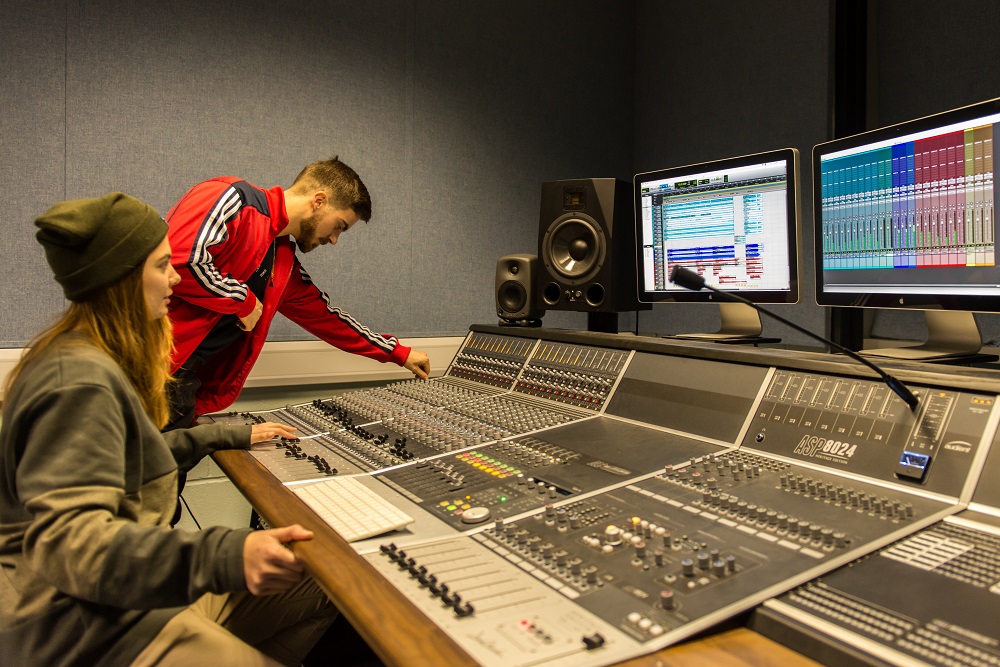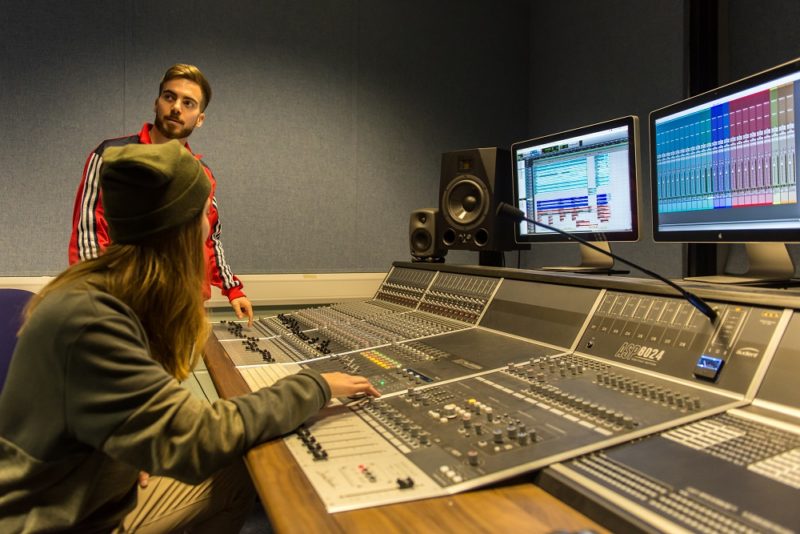It’s not often you see public displays of affection directed at pro audio gear, so Audient was particularly keen to chat with the Music Technology team, Rab McQueen, Robert Goldie & Colin Grassie at the University of the West of Scotland(UWS), when we saw how excited they were at the arrival of their Audient desk.
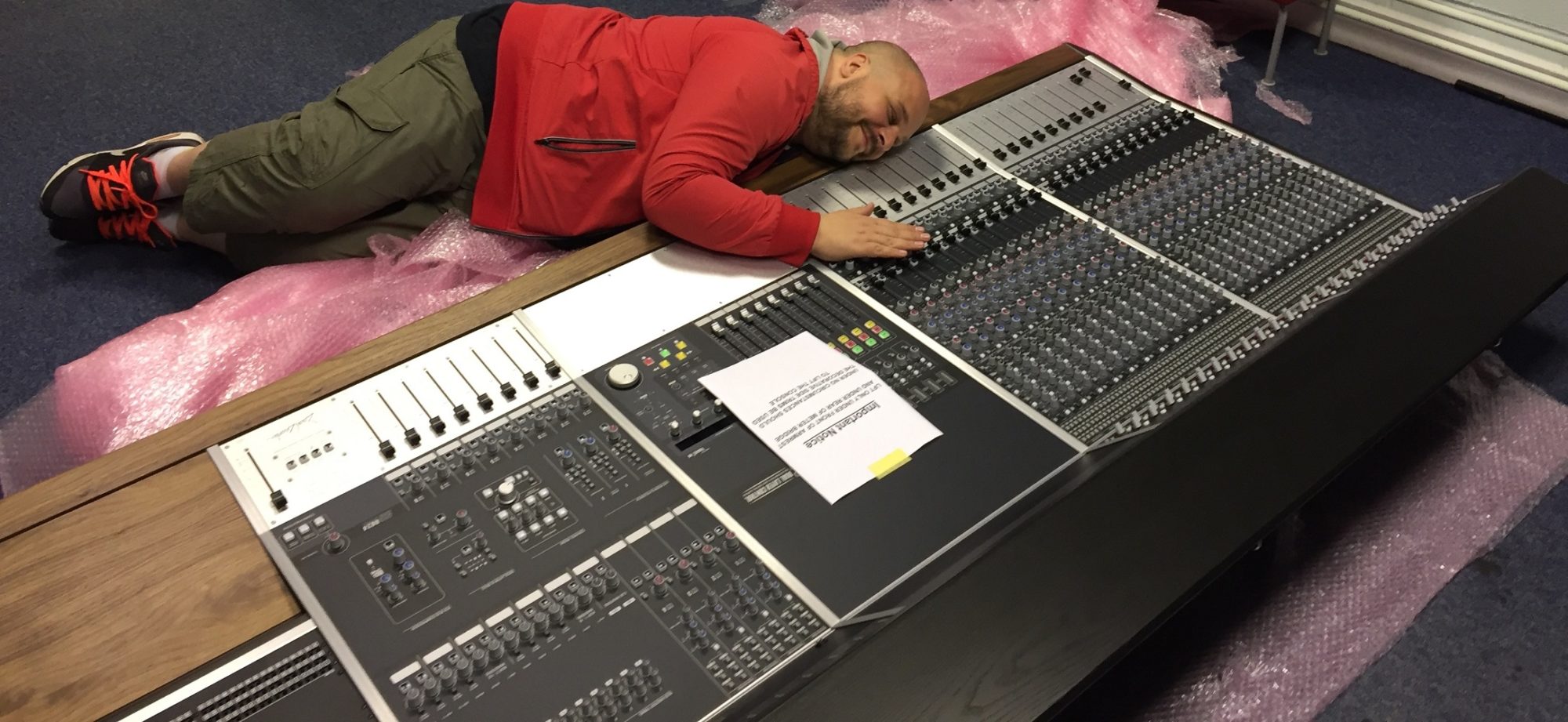
Taking delivery of an ASP8024 Heritage Edition console in time for the 2017 autumn trimester, we talked about how its arrival has influenced teaching, the studio’s setup and even heard feedback from students who reported the Audient inspired renewed vigour when it came to coursework. (Imagine!)
First up though, we asked what configuration they went for.
We’re running the 24-channel console with DLC and the Patch Bay, as well as being pre-wired for the ASP510 surround sound controller system later down the line.
What was the impetus for the purchase of this desk?
We purchased the Heritage console to replace our older analogue desk and to upgrade the studio facility to a more professional and commercial level. Our Studio A runs 32 channels of mastering grade conversion which have been phenomenal, so we felt that the replacement console needed to be up to that same standard and quality, something that was lacking with our previous desk.
Being able to track to the DAW and mix the tape returns simultaneously saves a tremendous amount of time during the recording and mixing process
How has the arrival of the console affected your teaching?
From an educational point of view, seamless archiving means that it’s possible to dig down and assess the individual elements of a completely analogue mix. Prior to installing the Audient, the archiving process was laborious and really time consuming in a busy studio with tight deadlines.
The layout of the desk itself is very straightforward and logical which lends itself well to a teaching environment. Our students have also commented on how the desk layout and the naming convention make it much easier and quicker to learn than other desks.
From a processing angle, the EQ is excellent with the “Air” in particular being utilised a lot. Quick patching of inserts is also a bonus.
What are your favourite features of the Heritage? What stands out for you in particular?
The Heritage’s feature of the mix bus compressor and “Retro Iron” go without saying but what really stands out to us is the versatility of the entire console.
Being able to track to the DAW and mix the tape returns simultaneously saves a tremendous amount of time during the recording and mixing process allowing our student engineers to provide initial control room mixes almost as quickly as they are performed. Additionally, the ability to throw the mixed individual channels, subgroups and final bus mix back to into the DAW again with the Copy LF feature in one pass, also means that archiving a full analogue mix is painless.
“…our current students are far more confident and better equipped for their work placements…”
The routing provided by the patchbay opens up a new level of processing options previously impossible with our old system, which can seem daunting at first, but again the design and layout helps tremendously with keeping on top of more advanced routing choices.
Installation was very easy with D-Sub connectors everywhere!
On which course(s) are you using it?
The desk is primarily used on our Music Technology course for larger music recording and production projects, however we regularly get project requirements from students within our UWS Creative Computing group (Games Design, Creative Animation) for dialogue and Foley recordings. We have other tracking and mixing facilities for post, but it’s great to show other digitally creative people a larger format/footprint console and discuss the advantages of analogue.
Now that we have this level of console in our main studio we are able to promote the facilities commercially
What is your take on teaching analogue signal flow?
In most cases, top to bottom from the desk meters down through the auxes explaining the branching-off of the incoming signals. (Lots of terrible plumbing analogies.) Due to most students being more familiar with DAWs as their first mixing environment, a ProTools session that mimics the desk layout is sometimes used and then later discarded as most students quickly choose the desk and relegate the DAW to functioning as a tape-machine!
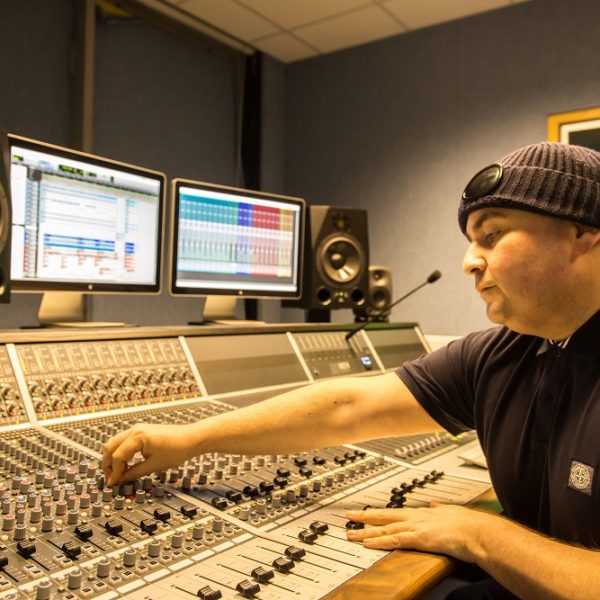 How many students will get ‘hands on’ with the Heritage throughout the academic year?
How many students will get ‘hands on’ with the Heritage throughout the academic year?
Over the course of the year we’ll probably have 60-70 individual students learning and using the console on single recordings, EP & album projects.
Are any of the studios/consoles being used commercially when not being used by students?
Now that we have this level of console in our main studio we are able to promote the facilities commercially and bring in Scottish-based artists with their projects. We are also seeing more paid work for the students coming through our doors. We’re currently looking to expand more of this kind of work during the teaching down time enabling album projects coming through. A few of the staff members have been bringing in work as well!
Students
How are students getting on with it?
With the addition of the new console and the teaching opportunities that it has brought to the table, our current students are far more confident and better equipped for their work placements in Glasgow’s higher end studios. Some students have even secured permanent positions and we are confident we’ll see more of this in the future.
“It has been the talk of the department and there is a reason why: it is truly a notable addition to the course.”
How have things changed from their perspective?
Lucy Irvine, Music Technology Undergraduate: “There has been a new enthusiasm within my year group to use the studio for all areas of coursework and for our own projects. Before with the previous desk the thought of recording in studio A was thought of as a bit of a mission, […] the Audient console on the other hand provides smoother flowing sessions with far more options to explore, on the level of the most professional studio consoles.
“It has been the talk of the department and there is a reason why: it is truly a notable addition to the course.”
Jon Youell (Music Technology Undergraduate): “Not only has it massively exceeded the sound quality of our old analogue desk, but it has increased the knowledge and understanding of the analogue signal flow. Personally, I have really enjoyed using the desk and really being able to hear the difference whilst using the analogue bus compression and also the Retro Iron when adding tonal shaping on the mix bus.
“Analogue signal flow is one of the skills that I personally have been able to improve on from using this desk alone. Whilst there is a learning curve to using the desk and combining this knowledge with how the signal works through the channel strips, once the concept has been grasped, the desk is easy and intuitive to use.”
UWS
So the UWS has completed its first trimester with the Heritage. How is the department changing/growing?
As part of a larger investment programme within UWS Music Technology at Paisley Campus, including hardware, software and facilities:
- With the new commercial viability brought into light by the Audient, we foresee an increase in industry recognition of our facilities, in particular the industry skills and calibre of our students and the quality of their portfolios.
- We aim to attract up and coming artists to work with our students (and staff) supporting new music talent primarily in West and Central Scotland. The Campus is 10 minutes commute from Glasgow which has a wealth of musical talent, a vibrant music scene and industry representation.
- We are now confident that we can prove ourselves as the institute of choice for Music Technology, Recording & Production in West and Central Scotland.
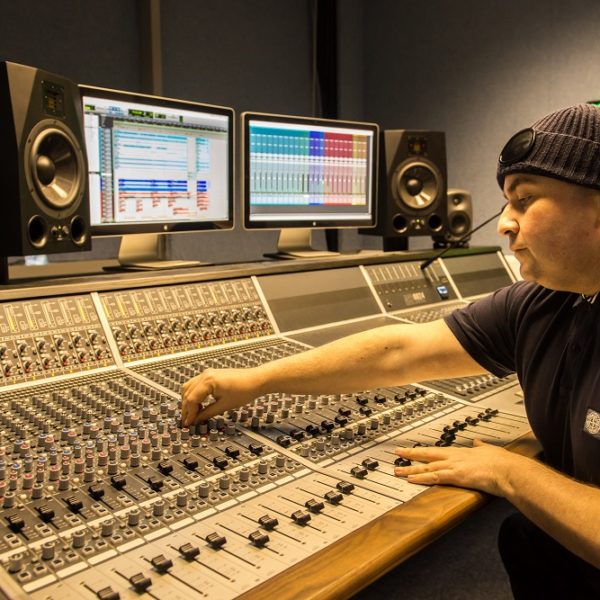 What’s the student intake looking like, year on year?
What’s the student intake looking like, year on year?
The degree has been running for 17 years in total and we have a consistent number of around 100 -120 students across 4 years of programme. We don’t to take on huge numbers which is essential for providing and delivering high quality teaching and learning within professional audio disciplines.
How do you see the future of UWS?
As the programme continually develops to include new technologies and industry practices, the new console will be a large part of this, highlighting the importance of analogue and digital integration for music production.
Amen to that. Thanks so much for chatting with us, chaps. We commend your passion for music technology and wish you all the very best!
